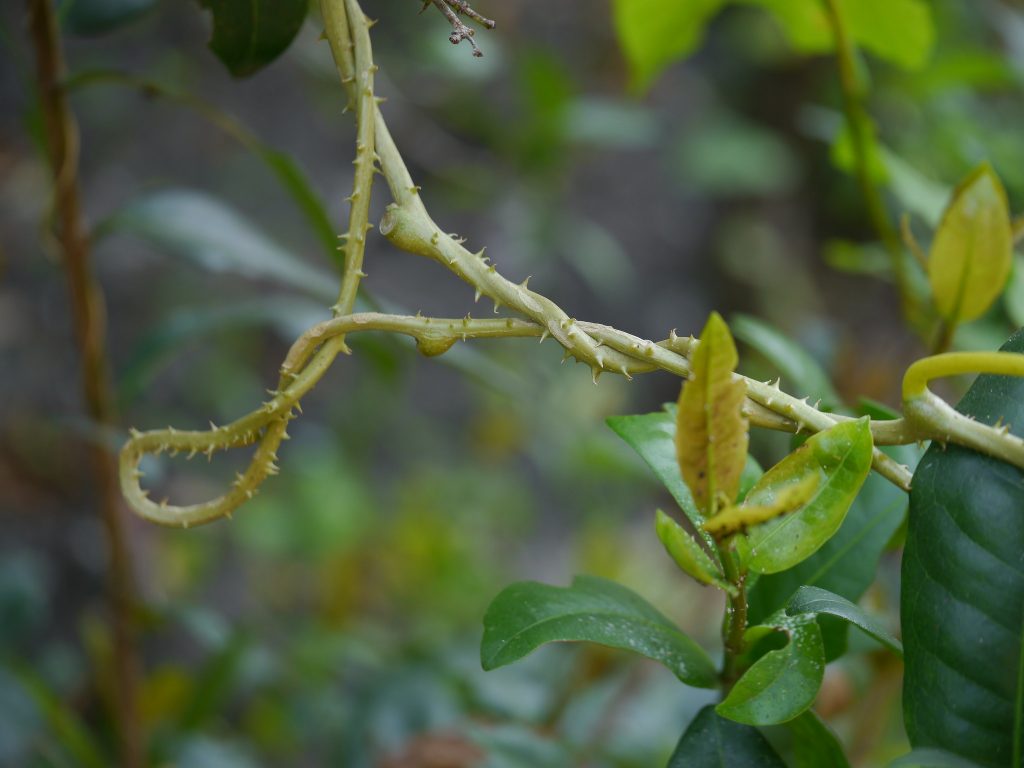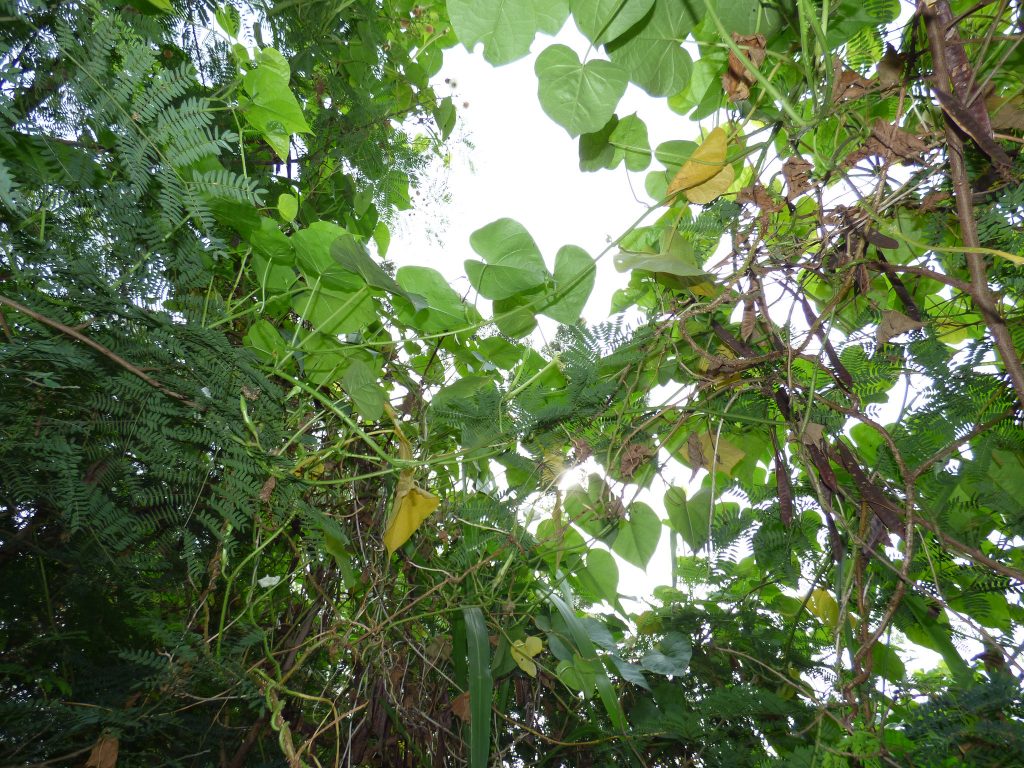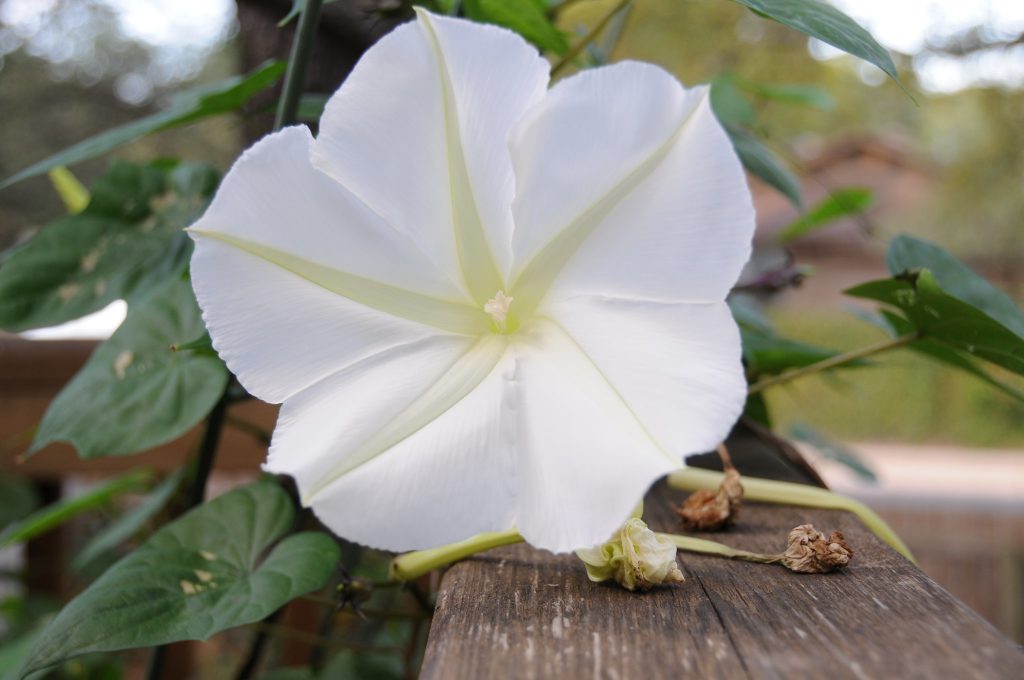
Are you aware of the existence of a plant that produces white flowers that open at night and close by the time the sun rises? That is a plant known by many names. The most common is the moonflower due to its flower shape resembling the moon and the fact that it blooms in the evening. Other names, which are used internationally in English, are evening glory, moonflower vine, and giant moonflower. However, its scientific name is Ipomoea alba. It is an annual vine related to morning glories, even though many of its features differentiate it from them. The most distinctive ones are the production of larger flowers that are only white and open at night.
Taxonomy
The moonflower classification is the following:
| Domain | Eukarya |
| Kingdom | Plantae |
| Phylum | Spermatophyta |
| Subphylum | Angiospermae |
| Class | Dicotyledonae |
| Order | Solanales |
| Family | Convolvulaceae |
| Genus | Ipomoea |
| Species | Ipomoea alba |
Description
Ipomoea alba is a perennial species native to tropical America. It is a twining vine that twists and climbs strings, fences, or bushes. In particular, the vine is programmed to wind only in one direction that cannot be reversed. It grows fast from seeds and creates heart-shaped leaves 15 to 20 centimeters in width. The flowers are also large, reaching a diameter of 15 centimeters. They are white, fragrant, and begin to open late in the evening, remaining like this the whole night. Blooming is most successful during the summer. It can also last until the early fall, provided that it’s not too dry. It prefers short photoperiods, so in the north, it waits until early autumn when the day lasts for 12 hours.
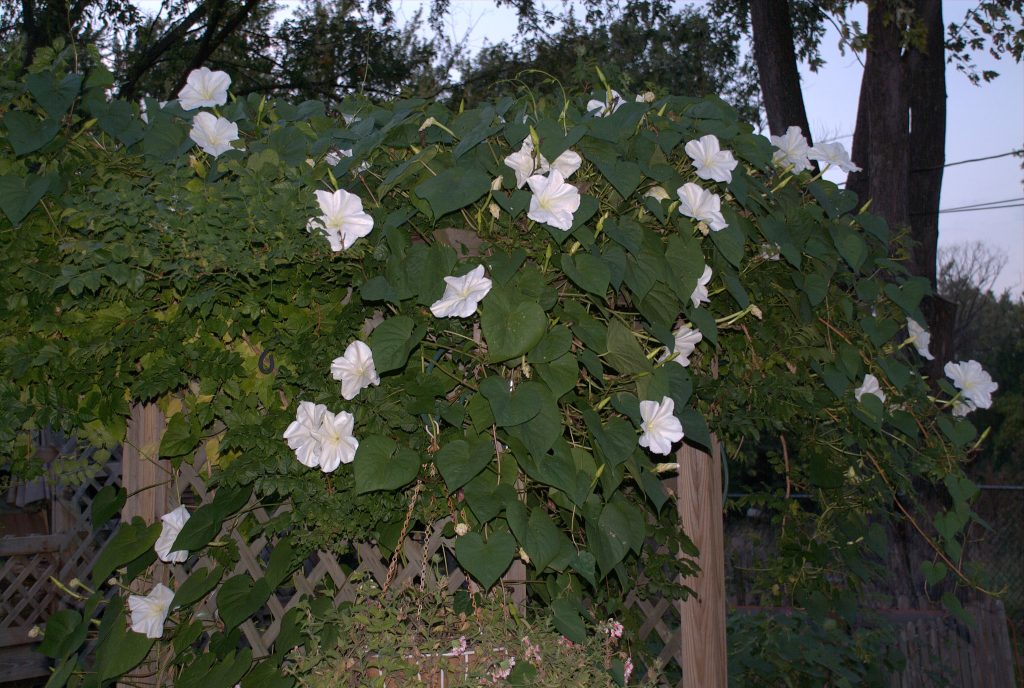
Distribution
Ipomoea alba is native to regions of Central America, Mexico, Southeastern USA, and the Caribbean. When Europeans learned about the existence of this species and heard of its uses in medicine, they took it with them to Europe. Since then, it has been widely cultivated in many areas around the world, including Asia, Africa, Australia, and the Pacific islands.
On the right: Ipomoea alba climbing (Image by Forest and Kim Starr from Flickr, under a Creative Commons Attribution 2.0 Generic License, no changes were made)
Habitats
Ipomoea alba requires moist and well-drained soils with pH ranging from 6.1 to 7.8. In its native environment, it is found in moist forests, rainforests, roads, and high elevation. The habitats, though, vary in non-native regions. For example, in China and Australia, it has invaded watercourses and disturbed areas such as parks and roadsides. In Fiji, it is found in forests up to 750 meters from sea level.
Uses
Since its discovery, the moonflower has been widely used around the world for various purposes. It has been commercialized as an ornamental plant for its beautiful flowers. It has also been used for medical reasons as a laxative, a fever reducer, and a snakebite treatment.
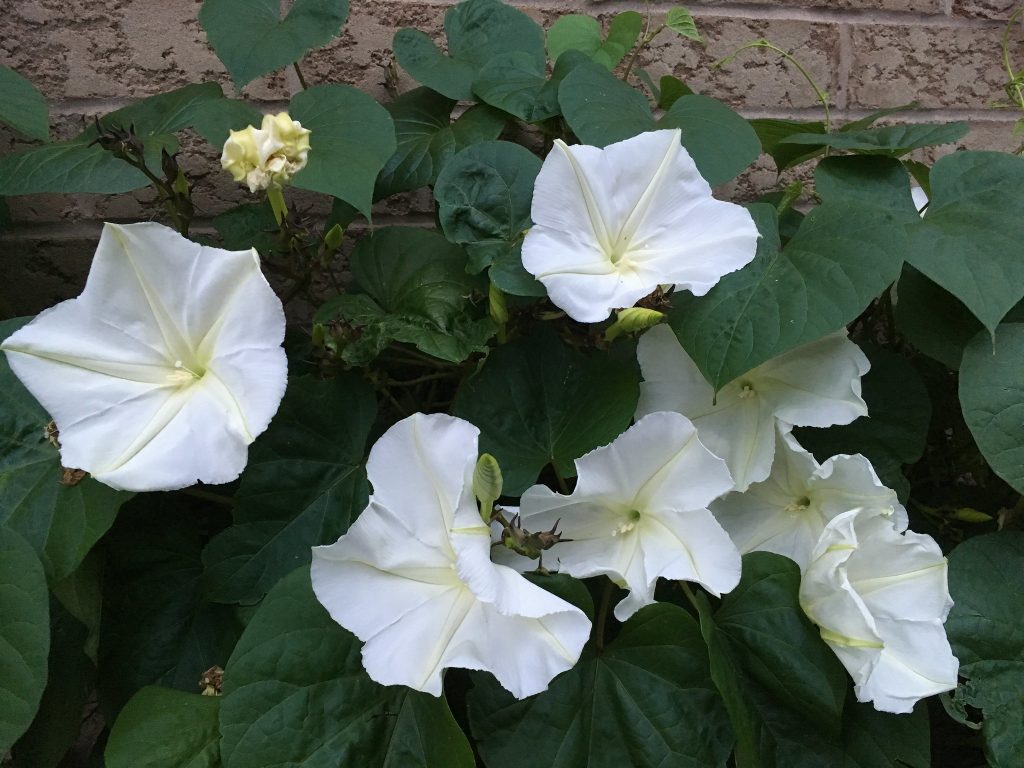
Problems associated with moonflower introduction
Ipomoea alba can naturally spread via seeds or vegetatively. However, it can also be introduced in new areas either accidentally, for example, by wind or water, or intentionally by humans for reasons we mentioned before. This way, it invades new areas where it affects the development of native plants. It can use other plants as a support to climb higher and shade the vegetation below it. Furthermore, it can spread on the ground, preventing the growth of the species there. Consequently, the moonflower is considered a threat to native plants as it is likely to outcompete them in terms of gaining nutrients, water, and light.
Sources:
https://www.cabi.org/isc/datasheet/119823#toidentity
https://en.wikipedia.org/wiki/Ipomoea_alba
https://www.uaex.edu/yard-garden/resource-library/plant-week/moonflower-9-16-05.aspx
https://www.mortonarb.org/trees-plants/tree-plant-descriptions/moonflower-annual-vine

